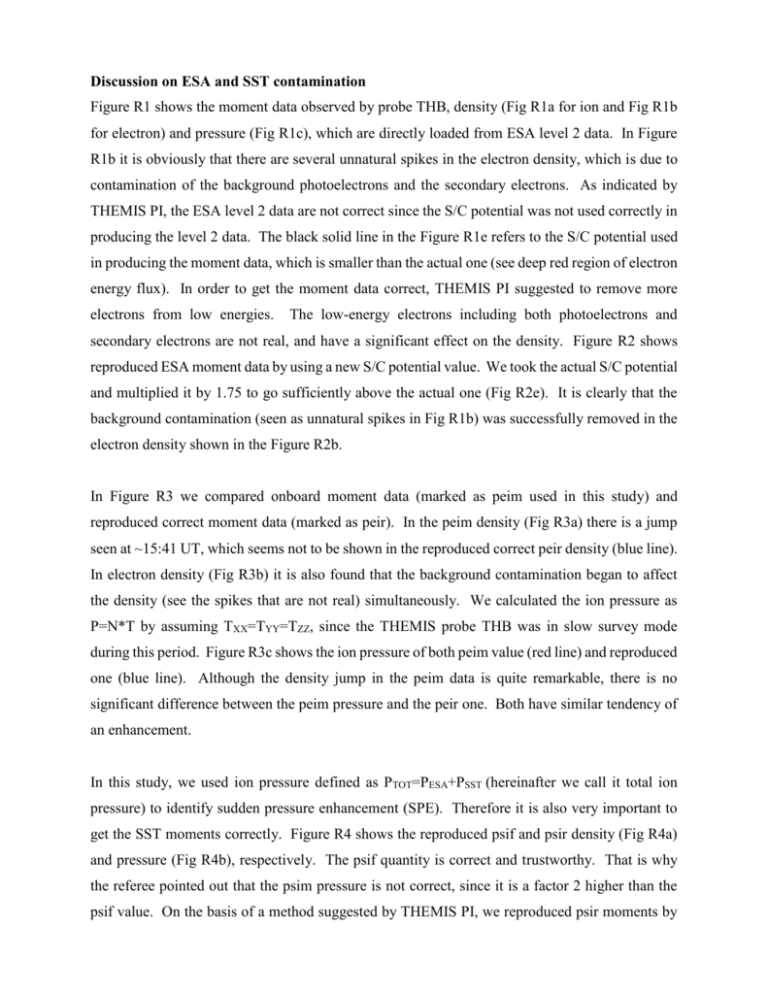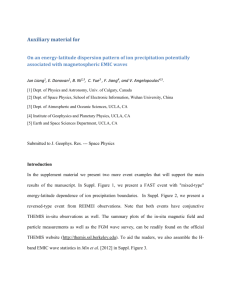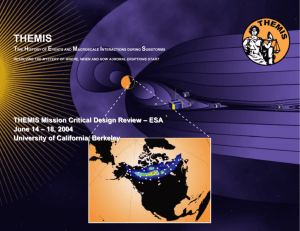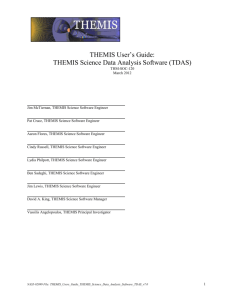jgra51539-sup-0015-text01
advertisement

Discussion on ESA and SST contamination Figure R1 shows the moment data observed by probe THB, density (Fig R1a for ion and Fig R1b for electron) and pressure (Fig R1c), which are directly loaded from ESA level 2 data. In Figure R1b it is obviously that there are several unnatural spikes in the electron density, which is due to contamination of the background photoelectrons and the secondary electrons. As indicated by THEMIS PI, the ESA level 2 data are not correct since the S/C potential was not used correctly in producing the level 2 data. The black solid line in the Figure R1e refers to the S/C potential used in producing the moment data, which is smaller than the actual one (see deep red region of electron energy flux). In order to get the moment data correct, THEMIS PI suggested to remove more electrons from low energies. The low-energy electrons including both photoelectrons and secondary electrons are not real, and have a significant effect on the density. Figure R2 shows reproduced ESA moment data by using a new S/C potential value. We took the actual S/C potential and multiplied it by 1.75 to go sufficiently above the actual one (Fig R2e). It is clearly that the background contamination (seen as unnatural spikes in Fig R1b) was successfully removed in the electron density shown in the Figure R2b. In Figure R3 we compared onboard moment data (marked as peim used in this study) and reproduced correct moment data (marked as peir). In the peim density (Fig R3a) there is a jump seen at ~15:41 UT, which seems not to be shown in the reproduced correct peir density (blue line). In electron density (Fig R3b) it is also found that the background contamination began to affect the density (see the spikes that are not real) simultaneously. We calculated the ion pressure as P=N*T by assuming TXX=TYY=TZZ, since the THEMIS probe THB was in slow survey mode during this period. Figure R3c shows the ion pressure of both peim value (red line) and reproduced one (blue line). Although the density jump in the peim data is quite remarkable, there is no significant difference between the peim pressure and the peir one. Both have similar tendency of an enhancement. In this study, we used ion pressure defined as PTOT=PESA+PSST (hereinafter we call it total ion pressure) to identify sudden pressure enhancement (SPE). Therefore it is also very important to get the SST moments correctly. Figure R4 shows the reproduced psif and psir density (Fig R4a) and pressure (Fig R4b), respectively. The psif quantity is correct and trustworthy. That is why the referee pointed out that the psim pressure is not correct, since it is a factor 2 higher than the psif value. On the basis of a method suggested by THEMIS PI, we reproduced psir moments by manually cleaning the sun contamination. In Figure R4b the reproduced psir ion pressure (here we still assuming TXX=TYY=TZZ to calculate the pressure) shows a good agreement with the psif value. Figure R5 presents the comparison between reproduced density and pressure of ESA (blue line) and SST (red line). In the Figure R5b we further recalculated the total ion pressure in black line. It is found that the total ion pressure is dominated by the PSST, which means in this event the total ion pressure is mainly contributed from high-energy ions. One important thing we intended to emphasize here is that the feature SPE was really observed by THEMIS probe THB. Discussion on velocity In magnetosphere, bulk velocity is mainly contributed from ExB, curvature, and magnetic field gradient drift velocities. In global MHD simulation, the bulk velocity is calculated from ExB drift velocity only, which corresponds to low-energy particles. In THEMIS observation, the low-energy particles are the equal of energy range of the ESA instrument. However, the SST instrument observes the high-energy particles which are principally controlled by the curvature and magnetic field gradient drift velocities. When comparing observed ion flow with simulated particle flow, it might not be correct to include the contribution from SST velocity. Figure R6 shows the observed ion velocity in GSM coordinate at probe THB. Solid line and filled circle in each panel indicate onboard MOM peim, and ESA peif velocities (in this event, there is no ESA peir velocities available), respectively. We discussed in the Figure R3 that the sufficient contamination began from 15:41 UT (also indicated by the referee), before which there seems no contamination affecting the ESA data. By comparing peim and peif velocities we could find that the peim velocity has a good agreement with peif velocity before 15:41 UT. Hence we suggest that we could use the peim velocity before the 15:41 UT, which was also confirmed by THEMIS PI. Summary Since the background electrons could also affect other THEMIS probes in the selected period, we modified Figure 2 of the manuscript by applying the approach stated above to other 3 THEMIS probes, which is suggested by THEMIS PI as to remove more electrons from low energies by increasing the S/C potential level. The results show that the feature we focused on in this study, which is the tailward retreat of the sudden pressure enhancement, does not change anymore.








